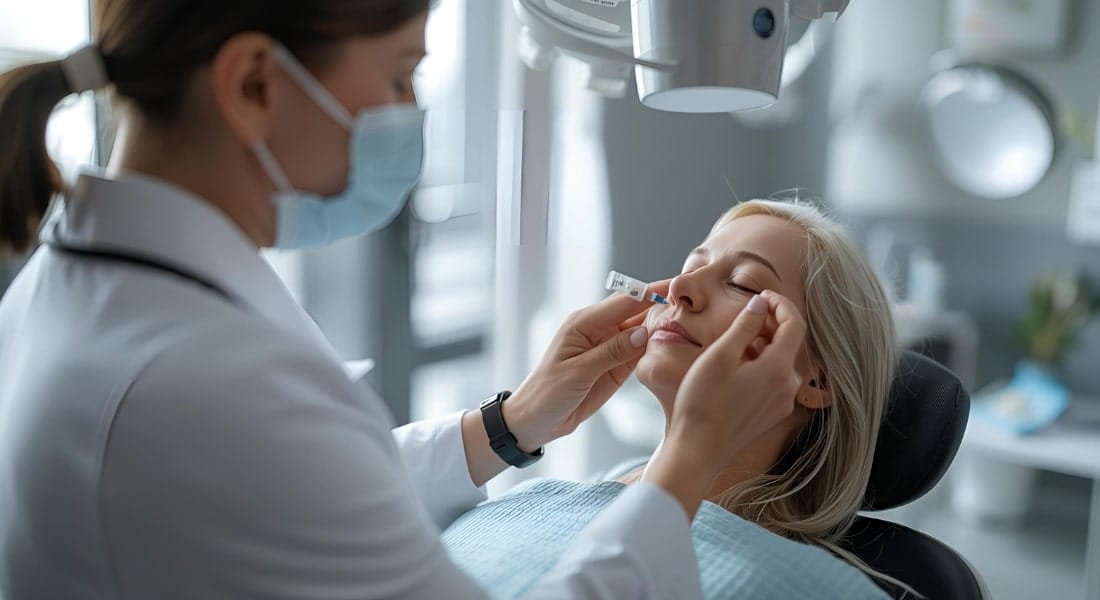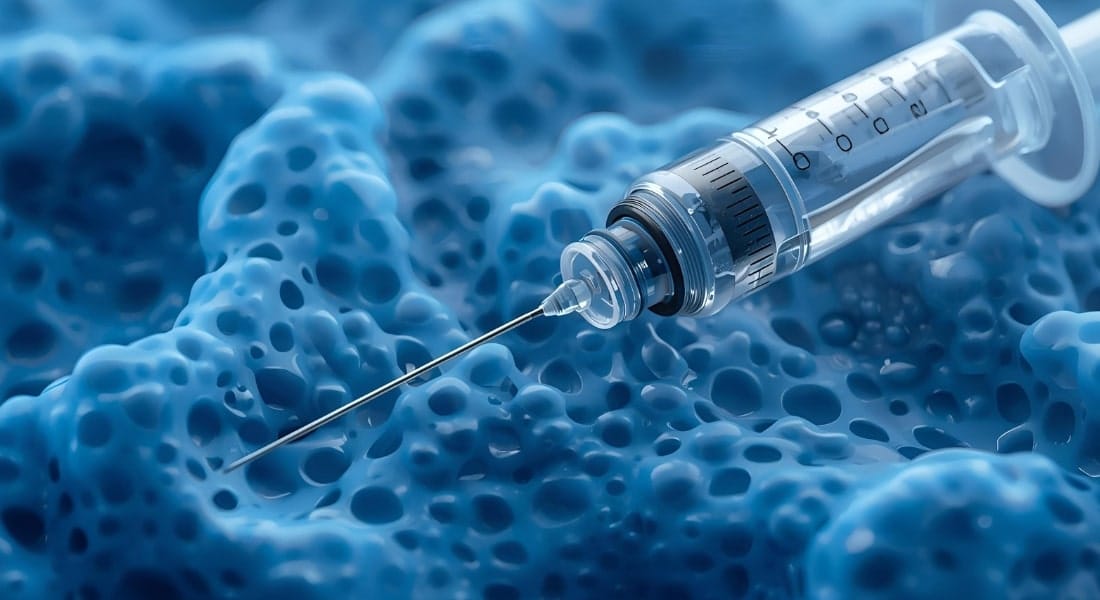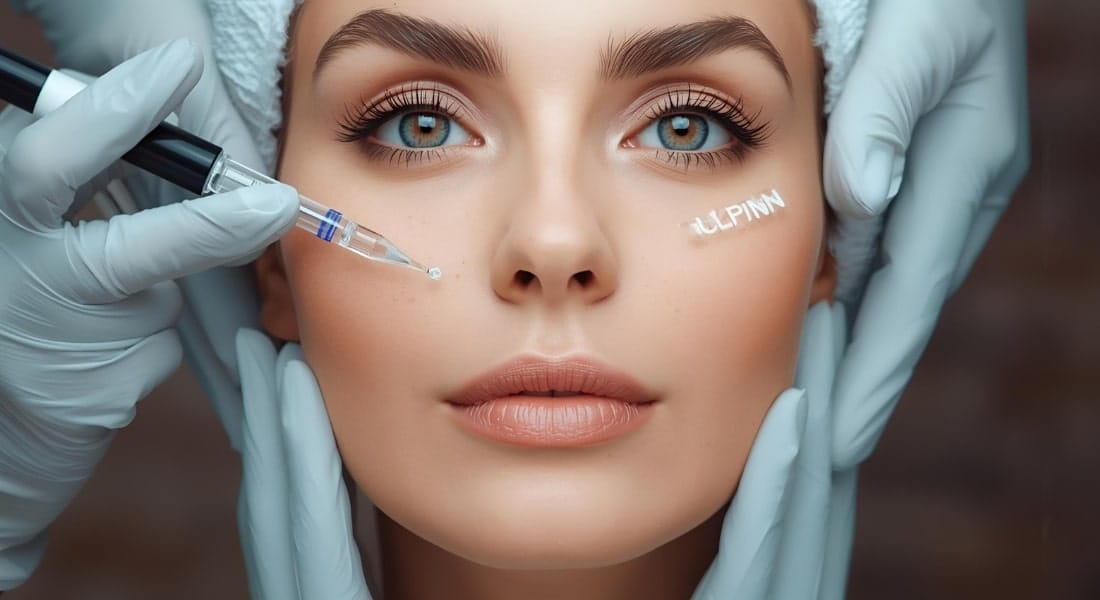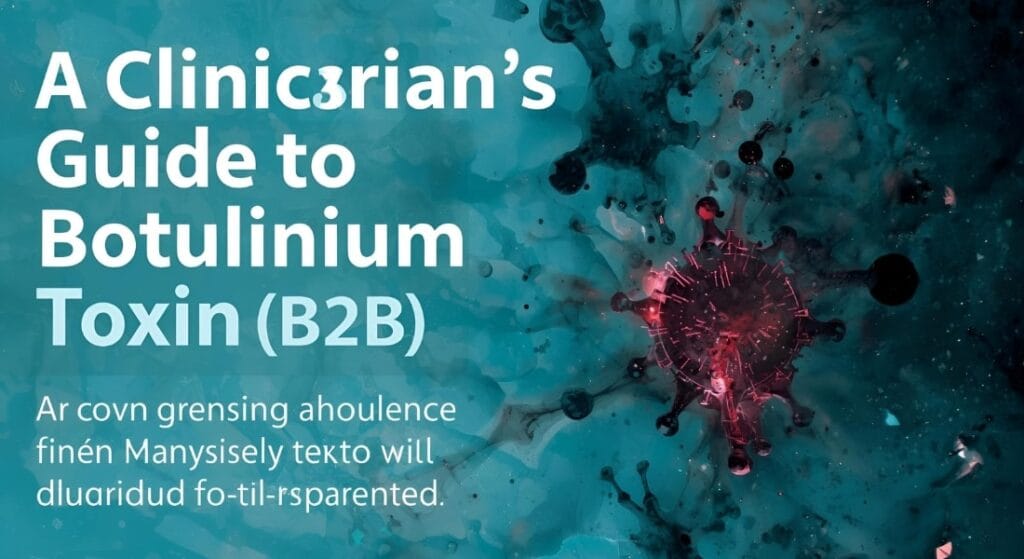The field of aesthetic and therapeutic medicine is in a constant state of evolution, driven by innovation and a growing demand for safe, effective, and minimally invasive treatments. At the forefront of this revolution is botulinum toxin, a substance that has transitioned from a specialized medical treatment to a cornerstone of modern clinical practice. Its remarkable efficacy in addressing a wide range of conditions—from the cosmetic reduction of fine lines and wrinkles to the management of debilitating medical disorders—has cemented its place as a quintessential tool for clinicians.
For dermatologists, plastic surgeons, aesthetic practitioners, and other healthcare professionals, a deep, evidence-based understanding of this injectable is not merely beneficial; it is essential for delivering superior patient outcomes and ensuring clinical excellence. This comprehensive botulinum toxin guide is designed to serve as a definitive resource, navigating the complex science, diverse applications, and best practices associated with its use. Our goal is to empower clinicians with the knowledge needed to master the art and science of botulinum toxin for clinicians, elevating their expertise and optimizing their aesthetic and therapeutic results.
What is Botulinum Toxin? A Scientific and Clinical Overview
At its core, botulinum toxin is a potent neurotoxin produced by the bacterium Clostridium botulinum. Its clinical utility lies in its unique and targeted mechanism of action. When injected into muscle tissue, the toxin binds presynaptically to high-affinity recognition sites on cholinergic nerve terminals. This binding prevents the release of acetylcholine, a key neurotransmitter responsible for muscle contraction. By blocking this chemical signal, botulinum toxin induces a temporary, localized paralysis or muscle relaxation, leading to a profound neuromuscular blocking effect. The targeted muscle gradually regains function over several months as new nerve terminals are formed. This reversible chemical denervation is the foundation of its therapeutic power.
There are seven distinct serotypes of botulinum toxin (A through G), but for clinical purposes, only two—Type A and Type B—are widely used and have regulatory approval. Botulinum toxin type A is by far the most prevalent and commercially available. Various products containing botulinum toxin Type A, such as onabotulinumtoxinA (Botox®), abobotulinumtoxinA (Dysport®), incobotulinumtoxinA (Xeomin®), and prabotulinumtoxinA (Jeuveau®), are well-known in the market. While they share the same active ingredient, differences in their protein formulation, molecular weight, and diffusion profiles can influence their clinical performance, including onset of action, spread, and duration of effect. Clinicians must be familiar with the nuances of each product to select the most appropriate one for their patient’s needs. The clinical relevance of these neurotoxin treatments is underscored by their stringent regulatory approvals, ensuring they are purified, standardized, and safe for human use.
Clinical Applications of Botulinum Toxin
The versatility of botulinum toxin is a primary reason for its widespread adoption. Its applications span both the aesthetic and therapeutic realms, offering solutions for a diverse range of patient concerns.

Aesthetic Uses of Botulinum Toxin
The aesthetic segment represents the largest market for botulinum toxin injections. The primary goal is to smooth dynamic wrinkles—those caused by repeated facial muscle movements. According to recent market analysis, the global botulinum toxin market is projected to reach over USD 21 billion by 2030, with aesthetic applications as the leading growth driver. The most common aesthetic indications include:
- Glabellar Lines: Often called “frown lines” or “the elevens,” these vertical lines between the eyebrows are a top indication.
- Forehead Lines: The horizontal creases that appear when the frontalis muscle is contracted.
- Crow’s Feet: The fine lines radiating from the outer corners of the eyes, caused by the orbicularis oculi muscle.
- Gummy Smile: Injecting small doses into the levator labii superioris alaeque nasi muscle can lower the upper lip, reducing excessive gum show.
- Jawline Slimming: Targeting the hypertrophied masseter muscle can create a more V-shaped facial contour.
- Platysmal Bands: The vertical neck bands that become prominent with age can be softened to rejuvenate the neck area.
Therapeutic Uses of Botulinum Toxin
Beyond aesthetics, the therapeutic uses of botulinum toxin are equally significant, often improving patients’ quality of life. These applications are a testament to the neurotoxin’s profound medical value.
- Chronic Migraine: Botulinum toxin has been a game-changer for patients suffering from chronic migraines, effectively reducing the frequency and severity of headaches.
- Hyperhidrosis: Injections can significantly reduce excessive sweating in areas like the underarms, palms, and feet by blocking nerve signals to the sweat glands.
- Spasticity: Used to manage focal spasticity in conditions like cerebral palsy or post-stroke, botulinum toxin relaxes overactive muscles, improving mobility and reducing pain.
- Blepharospasm: This condition, characterized by involuntary eyelid muscle contractions, is often treated with botulinum toxin injections to provide relief and restore normal vision.
- Cervical Dystonia: It is used to alleviate the painful, involuntary muscle contractions in the neck that cause the head to twist or turn.
The dual-purpose nature of botulinum toxin allows for a robust and diversified clinical practice, catering to both cosmetic and medical patient populations.
Rheology and Injection Science for Clinicians
Mastery of botulinum toxin injection techniques is what separates a proficient practitioner from a true expert. This requires an in-depth understanding of not just the anatomical targets but also the product’s rheology, dosage, and dilution.

Dosage, Dilution, and Units Botulinum toxin is supplied as a lyophilized powder and must be reconstituted with sterile, non-preserved saline. The dilution ratio is a critical factor that directly affects the product’s concentration and diffusion. A higher dilution can lead to a wider spread, which may be desirable for treating larger muscles or areas like the forehead, but it also increases the risk of diffusion-related adverse events if not meticulously controlled. Conversely, a lower dilution allows for more precise, targeted injections, ideal for smaller muscles or delicate areas like the crow’s feet.
The “units” of botulinum toxin are not standardized across all brands. A unit of one product does not necessarily equate to a unit of another. This is a crucial distinction that clinicians must remember. For instance, the dose required for a specific treatment area with product A might be different from product B. It is paramount to follow the manufacturer’s guidelines for each specific product and to gain clinical experience with its unique characteristics.
Injection Technique and Anatomical Considerations Precision is the hallmark of safe injection practices. Clinicians must possess an extensive knowledge of facial and muscular anatomy to ensure the neurotoxin is delivered to the correct depth and location. Key anatomical considerations include:
- Muscle Fiber Direction: Injections should be placed to inactivate specific muscle groups without affecting adjacent ones. For example, in the glabella, injections must be placed deep enough to reach the corrugator supercilii while avoiding the frontalis, which can lead to a “Spock brow.”
- Vascular and Neural Structures: A thorough understanding of the vascular network and nerve pathways is essential to minimize the risk of bruising, hematoma, or nerve damage.
- Patient-Specific Anatomy: Every patient’s facial musculature is unique. Practitioners should perform a dynamic assessment, asking the patient to animate their face to identify muscle contractions and tailor the injection plan accordingly. A “one-size-fits-all” approach is not viable.
The rheological differences between botulinum toxin and other aesthetic injectables, such as dermal fillers, are significant. While fillers are gel-like substances that provide volume and lift, botulinum toxin is a liquid solution injected to relax muscles. Confusion between these two product types or their improper administration can lead to suboptimal results and complications. This distinction is a fundamental part of a comprehensive clinician botulinum toxin guide.
Safety Profile and Managing Adverse Events
While botulinum toxin is considered one of the safest aesthetic procedures when performed by a qualified professional, understanding its safety profile and the management of adverse events is non-negotiable. The major tools for preventing adverse effects are knowledge, skill, and careful patient selection.
Common Side Effects The majority of side effects are mild, transient, and self-limiting. These include:
- Bruising and Swelling: Common at the injection site due to needle insertion. These can be minimized with cold compresses and by avoiding blood-thinning medications before the procedure.
- Headaches: A temporary side effect reported by some patients, usually resolving within 24-48 hours.
- Asymmetry: Can result from improper dosage, placement, or a patient’s pre-existing facial asymmetry. This can often be corrected with a touch-up injection after a few weeks.
Rare Complications Although rare, more significant complications can occur, underscoring the importance of clinician expertise and a thorough patient assessment.
- Ptosis: Drooping of the eyelid (blepharoptosis) or brow (brow ptosis) is a well-known risk. It typically occurs when the neurotoxin diffuses to the levator palpebrae superioris muscle (eyelid ptosis) or is injected too low in the frontalis (brow ptosis). While temporary, it can be distressing for the patient. Managing ptosis involves the use of alpha-adrenergic eye drops like apraclonidine, which can provide temporary relief.
- Diffusion Issues: Unwanted spread of the toxin to unintended muscles can lead to a variety of issues, such as a crooked smile, dry mouth, or difficulty swallowing (dysphagia). These complications are most often a result of incorrect injection technique or excessive dosage.
Mitigating risk and ensuring botulinum toxin safety begins with a meticulous patient consultation. This includes a detailed review of medical history, identification of any contraindications (e.g., neuromuscular disorders), and a frank discussion of realistic expectations. Educating the patient on post-treatment care—such as avoiding rubbing the treated area and strenuous exercise—is also critical in preventing adverse effects of botulinum toxin and ensuring safe botulinum toxin use.
The Business of Botulinum Toxin in Aesthetic Clinics
Beyond its clinical applications, botulinum toxin is a powerful driver of growth and profitability in any aesthetic clinic. The B2B botulinum toxin market is booming, reflecting a strong and consistent demand from a diverse patient base.

The high-volume, repeat nature of botulinum toxin procedures makes them a cornerstone of clinical practice growth. The global aesthetic medicine market is experiencing significant expansion, particularly in the Asia-Pacific region, driven by rising disposable incomes and a societal emphasis on youthful appearance. For clinics, botulinum toxin offers a pathway to increased revenue streams, as it serves as a gateway procedure that often leads to patient interest in other treatments, from dermal fillers to advanced skin rejuvenation technologies.
Building a successful practice with botulinum toxin hinges on patient retention. Consistent, natural-looking results are the key to building trust and ensuring patients return for repeat treatments every 3-4 months. A robust patient communication and follow-up strategy is essential. Furthermore, the selection of premium products plays a pivotal role. The quality of the injectable directly impacts the results, safety, and patient satisfaction. By using a product with a proven track record, clinicians can enhance their clinic’s reputation, build a loyal clientele, and command a premium for their services.
Introducing SIAX – Botulinum Toxin: A Partner for Clinical Excellence
For clinicians seeking consistent, reliable, and premium results, the choice of product is paramount. Aakaar Medical Technologies Ltd is proud to offer SIAX – Botulinum Toxin, a trusted solution that sets a new standard for performance and safety.
SIAX is a purified Botulinum Toxin Type A complex with a proven high safety and efficacy profile. Derived from the Clostridium botulinum strain Hyper Hall, it has a decade-long history of clinical use and over 5 million vials sold worldwide, including in Brazil, India, and Hong Kong. This global presence is a testament to its reliability and the confidence it has earned among clinicians.
The unique benefits of SIAX – Botulinum Toxin make it an ideal choice for a wide range of applications:
- High Safety and Efficacy Profile: SIAX is backed by extensive clinical data, demonstrating its effectiveness in smoothing fine lines and wrinkles while maintaining an excellent safety record.
- Versatile Indications: As a high-quality botulinum toxin for clinicians, SIAX is approved for both aesthetic and therapeutic indications, including glabellar lines, blepharospasm, cervical dystonia, and hyperhidrosis. This versatility simplifies inventory management and streamlines treatment protocols.
- Precision Dosing: SIAX provides clinicians with the precision needed for targeted applications, ensuring predictable and reliable results.
- Long-Lasting Results: Patients can enjoy the benefits of SIAX for an extended period, typically three to four months, which is a key factor in patient satisfaction and retention.
Clinicians seeking consistent results can rely on SIAX – Botulinum Toxin, a trusted solution from Aakaar Medical Technologies Ltd. By choosing SIAX, you are not just selecting a product; you are partnering with a company committed to providing medical professionals with the tools they need for clinical excellence.
Conclusion

Botulinum toxin has undeniably become an indispensable asset in modern aesthetic and medical practice. Its ability to provide both dramatic aesthetic transformations and life-changing therapeutic relief makes it a powerful tool for clinicians committed to patient-centered care. As the market for aesthetic injectables continues to grow, so does the responsibility of practitioners to adhere to the highest standards of safety, technique, and professionalism.
By embracing an evidence-based approach and continuously refining their skills, clinicians can unlock the full potential of this remarkable neurotoxin injection. The journey to clinical mastery is ongoing, and the choice of the right product is a crucial step.
We encourage all clinicians to explore the benefits of SIAX – Botulinum Toxin by Aakaar Medical Technologies Ltd. It is more than just a product; it is a symbol of quality and a partner in your pursuit of clinical excellence.

